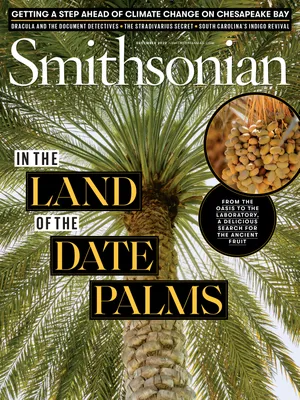Have Women Ever Run a Native American Nation? And More Questions From Our Readers
You’ve got questions. We’ve got experts
:focal(480x361:481x362)/https://tf-cmsv2-smithsonianmag-media.s3.amazonaws.com/filer_public/73/2f/732f424b-467a-43a2-97e5-2177c19af97c/ask.jpg)
Q: Have women ever run a Native American nation? Virginia Plumley | Huntington, West Virginia
Native women, especially respected elders, have always been involved in important decisions. In addition, some tribes—including the Hopi, Cherokee, Seneca, Chickasaw, Navajo and Seminole—are matrilineal, which means children born to these nations are associated with their mothers’ clans, not their fathers’. Historically, when the men were away for diplomacy, hunting or war, the women of a tribe assumed leadership functions that would have normally been assigned to males. In 1987, Wilma Pearl Mankiller made history by becoming the first woman to be elected chief of the Cherokee Nation. Today, it is common for women to serve in elected tribal positions. Dennis Zotigh, cultural specialist, National Museum of the American Indian
Q: What do vegetarians eat in space? Celia Forrest | Palm Harbor, Florida
Meals in space are an astronaut’s personal decision, and there are lots of great options for vegetarians. Meats actually need to be irradiated to be safe to eat in space, so vegetables, grains, fruits and other foods are a large part of any astronaut’s diet. Tofu is available as part of some entrees, and even vegans can design their own menus prior to their missions. The key is making sure diets are nutritionally balanced and high enough in calories and protein—the body doesn’t need to work as hard in space but it still needs healthy food. Jennifer Levasseur, space history curator, National Air and Space Museum
Q: Does the Smithsonian have a plan to protect its treasures in case of a disaster? Michael J. McQuillen | Indianapolis, Indiana
Yes, the Smithsonian is prepared for just about any disaster scenario, whether natural or human-made. In 2016, we established a Preparedness and Response in Collections Emergencies team (PRICE) to lead events, trainings, workshops and outreach efforts. We also partner with emergency response organizations including FEMA, DC Fire and EMS, Homeland Security, the National Park Service and the Heritage Emergency National Task Force, among others. We have flood-safe, energy-efficient spaces and high-quality gasketed cabinets to protect our collections during power outages and extreme weather events. We also have plans in place for relocating collections within museums or to off-site storage facilities. Samantha Snell, collections management specialist, National Collections Program
Q: Is it possible for an animal to be rare without being threatened with extinction? Katherine B. Sabia | Monroe, Connecticut
An animal can be rare without being threatened with extinction if it’s found only in an isolated geographical range. There are also some species that are viewed as rare in certain places even though they abound in others. In Britain, for instance, birdwatchers consider the golden pheasant a rare sight, since it numbers only an estimated 1,000 to 2,000 there. But the golden pheasant is abundant enough in Chinese forests that the International Union for Conservation of Nature (IUCN) ranks it a species of least concern. Nucharin Songsasen, Center for Species Survival,
Smithsonian Conservation Biology Institute
